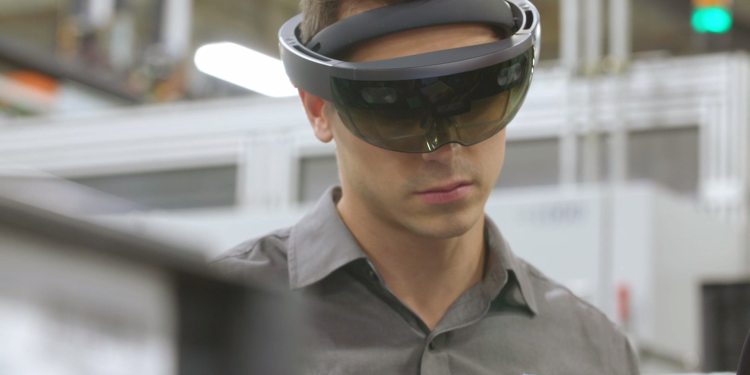Microsoft didn’t have much to say about HoloLens and mixed reality at its Build 2018 developers conference today. But the company still managed to squeeze in two new apps, coming as previews on May 22: Microsoft Remote Assist and Microsoft Layout.
Microsoft’s mixed reality headsets haven’t really taken off. Last year at Build 2017, the company unveiled mixed reality motion controllers. This year, the company showed off two new mixed reality apps in preview, specifically for HoloLens.
Both are designed for firstline workers, which Microsoft describes as the first point of contact between a company and its customers — the employees who are directly involved in making products, represent a company’s brand, and see products and services in action. Microsoft estimates there are 2 billion firstline workers (or 80 percent of the global workforce).
Microsoft Remote Assist
Microsoft Remote Assist lets firstline workers help customers collaborate remotely with heads-up, hands-free video calling, image sharing, and mixed reality annotations. Firstline workers can share what they see with any expert on their Microsoft Teams contact list, and then solve the problem or complete the task right then and there.
Three capabilities stand out:
- Collaborate with shared perspective: Video calling using Microsoft Teams, image sharing, and mixed-reality annotations allow firstline workers to share what they see and collaborate with experts remotely, where both parties can annotate their shared view with mixed-reality ink and arrows. The annotation can be added directly into a HoloLens user’s view using an external device, such as an iPhone, for input.
- Communicate securely: Users get the ability to control access to remote communications with Azure Active Directory login and Mobile Device Management.
- Increase efficiency: With mixed-reality annotations, live streaming, and video capture, firstline workers and experts can identify and address issues accurately the first time, eliminating travel time and expediting troubleshooting.
Microsoft says customer feedback over the two years since HoloLens shipped in March 2016 has pointed to remote assistance as having a ton of potential for mixed reality. The same goes for space planning, training, product development collaboration, and access to spatial data from IoT devices.
Microsoft Layout
Microsoft Layout lets customers design spaces in context with mixed reality, using HoloLens from concept to completion. You can import 3D models to create room layouts in real-world scale, view designs as high-quality holograms in physical space or in virtual reality, and share and edit with whomever you want in real time.
Layout’s industrial applications might be more compelling than its consumer-facing ones. A video from manufacturing firm ZF showed a HoloLens user manipulating 3D models of factory equipment to prepare for a real-world redesign of the manufacturing floor. The ZF employee said that the prior process of taking photos and screenshots wasn’t nearly as efficient as walking through the space and visualizing the equipment in AR form.
Collaborating in virtual reality and augmented reality, playing with 3D models and holograms — those all sound fine and dandy. But if Microsoft doesn’t figure out a way to actually sell HoloLens and mixed reality headsets competitively against the likes of HTC’s Vive, Facebook’s Oculus, and even Google’s Daydream, only a handful of people are ever going to use these features.


